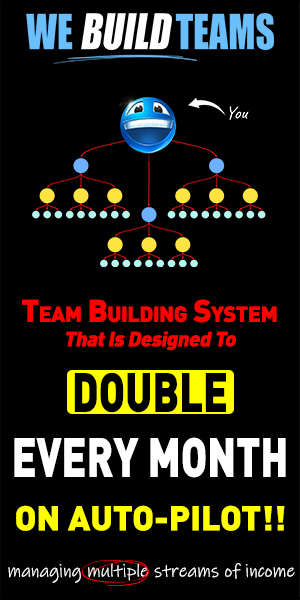The Evolution of MLM Recruiting and Business Building Through the Ages
Multilevel marketing (MLM), often called network marketing, has come a long way since its humble beginnings in the early 20th century. Once rooted in door-to-door sales and home meetings, the MLM business model has continually evolved, adapting to cultural shifts, technology advances, and consumer behavior trends.
In this post, we’ll take a journey through time to explore how MLM recruiting and business building have changed through the decades, and what modern marketers must understand to thrive today.
The Early Days (1930s–1950s): The Foundation of MLM
MLM began to take shape in the 1930s with companies like California Vitamin Company (later Nutrilite) and Amway in the 1950s. The primary mode of recruitment and business building was word-of-mouth, reinforced by face-to-face interactions and physical product demonstrations.
Key Features:
-
Home parties and kitchen-table presentations
-
Print brochures and handwritten orders
-
Phone calls and snail mail for follow-ups
-
Recruitment relied heavily on personal trust and relationships
This era was all about belly-to-belly marketing, where charisma and local networks made or broke a distributor’s success.
The Boom of the 70s and 80s: The Golden Era of In-Person Hustle
By the 1970s and 1980s, MLM companies exploded in number, thanks in part to increasing public awareness and aggressive expansion. Companies like Herbalife, Shaklee, and Mary Kay became household names.
What Changed:
-
The rise of national training events and rallies to build excitement
-
Tapes and VHS training programs distributed by upline leaders
-
Cold calling and lead buying entered the scene
-
The emergence of “dream lifestyle” marketing: cars, houses, and freedom
Recruitment was still offline, but efforts became more systematized and motivational. Scripts and duplication systems gained popularity.
The 90s and Early 2000s: The Internet Arrives
The internet began disrupting every industry—and MLM was no exception.
The Shift:
-
Email replaced phone follow-ups
-
Online classified ads and forums were used for lead generation
-
Distributors built simple websites and autoresponders
-
Early adopters experimented with Google Ads and banner ads
However, the industry was split: traditionalists clung to home meetings, while tech-savvy reps started building global teams from behind a screen.
This was the first time MLMers realized they didn’t need to chase friends and family—strangers online were more scalable.
2010–2018: Social Media Changes the Game
Facebook, Instagram, YouTube, and later TikTok dramatically changed how MLM businesses were built.
The Social Selling Explosion:
-
Facebook Lives and Instagram Stories replaced home parties
-
“Attraction marketing” became the go-to strategy: provide value, build a brand, attract leads
-
Branding became essential—no more hiding behind the company
-
Influencers and lifestyle marketers began using their platforms to attract large teams
Online recruiting became less about selling a product and more about selling a vision. This era rewarded those who could build community and connection online.
2019–Present: Automation, AI, and Ethical Transparency
MLM in the 2020s is more sophisticated, automated, and transparent than ever before.
Key Trends:
-
Funnels and autoresponder systems are now standard
-
AI tools help with lead generation, follow-up, and content creation
-
Regulatory scrutiny has forced ethical clarity: income disclosures, avoiding hype, and focusing on product value
-
Younger generations (Millennials and Gen Z) are skeptical of traditional MLM tactics and demand authenticity
-
Modern marketers use personal branding, email marketing, video content, and lead magnets instead of direct pitches
The future belongs to those who can blend technology, education, and relationship-building in a way that feels human—not hypey.
The Future of MLM: What’s Next?
Looking ahead, we’re seeing a convergence of affiliate marketing, influencer marketing, and network marketing. The lines are blurring.
Future Predictions:
-
MLM 2.0 models that focus more on customer acquisition than recruitment
-
Greater use of chatbots, voice AI, and predictive analytics
-
Blockchain and smart contracts may play a role in commission tracking and transparency
-
Social commerce will continue growing—buying directly from short-form video content
Conclusion: From Hustle to Heart-Centered Automation
MLM has transformed from a gritty, grind-it-out hustle business to a more leveraged, automated, and values-driven industry. While the tools and trends will continue to evolve, one thing remains timeless:
People don’t join companies—they join people.
Success in modern MLM is about leading with value, showing up authentically, and building systems that duplicate without burning out.
Whether you’re just starting or reinventing yourself in the space, remember: you’re not building an MLM business the old way. You’re building a personal brand-powered movement, fueled by technology and guided by heart.

